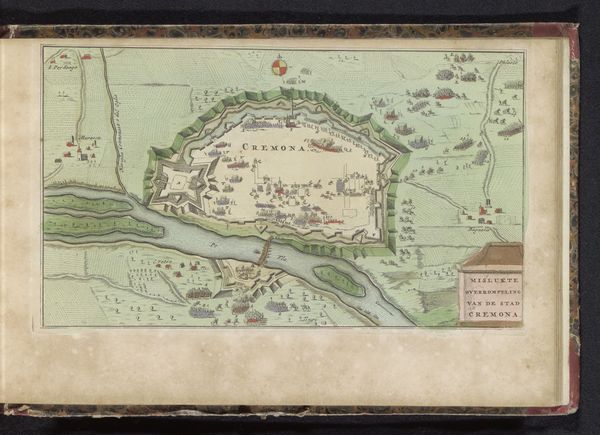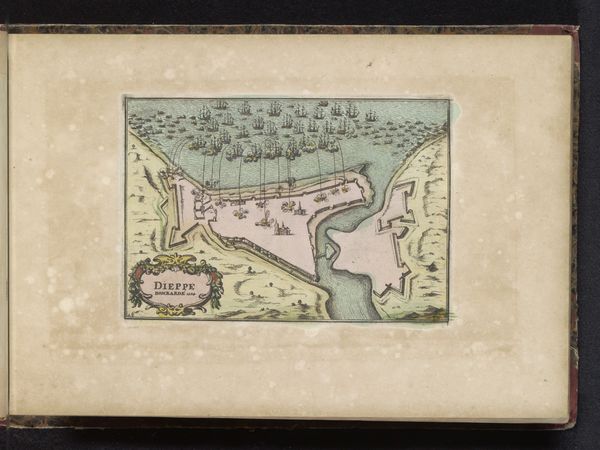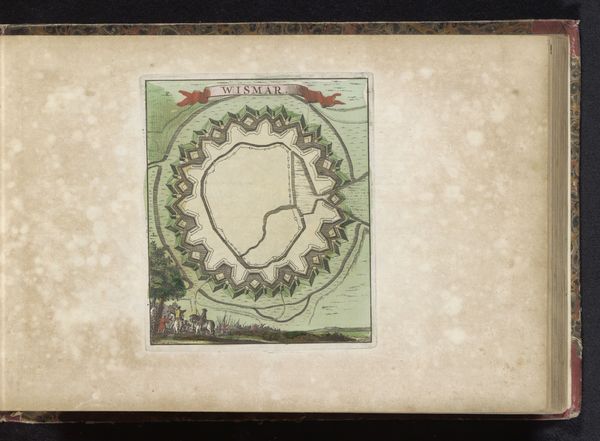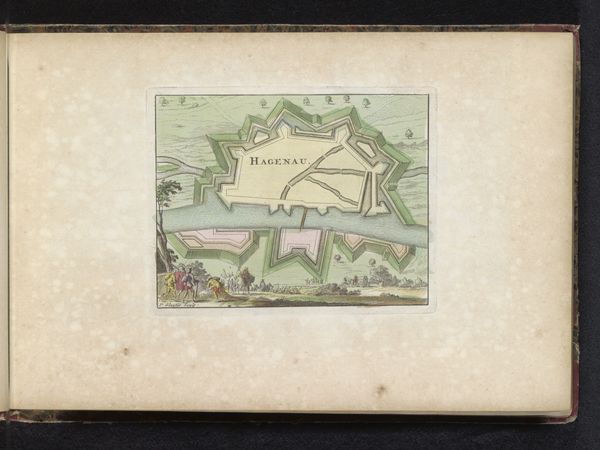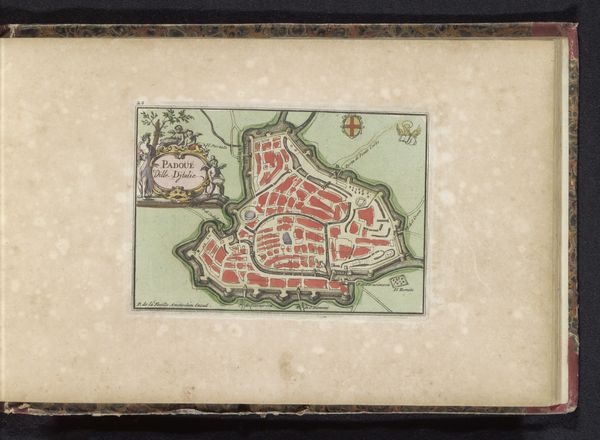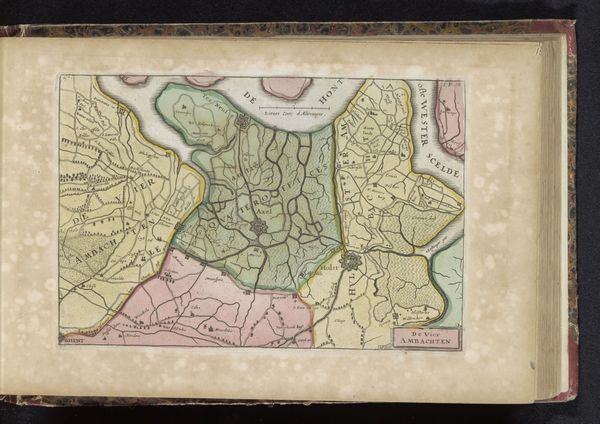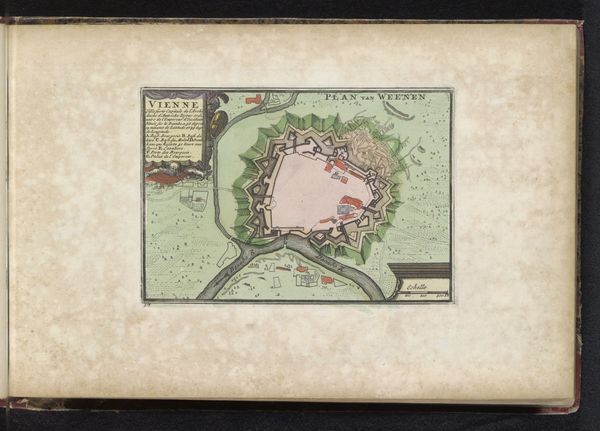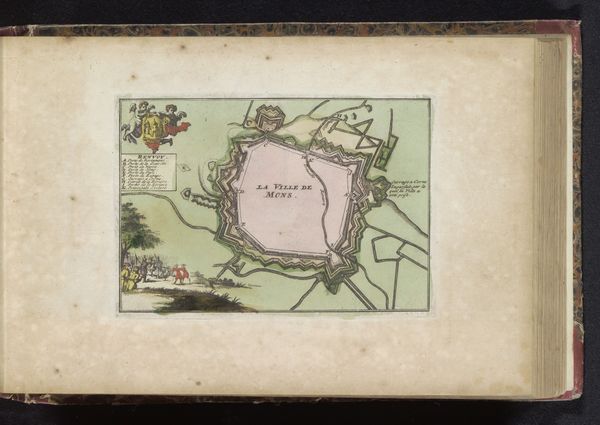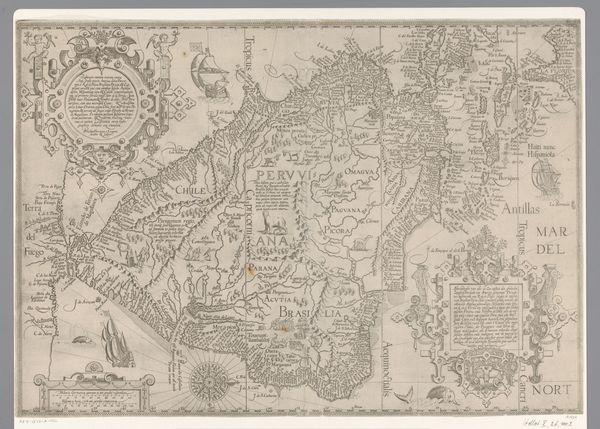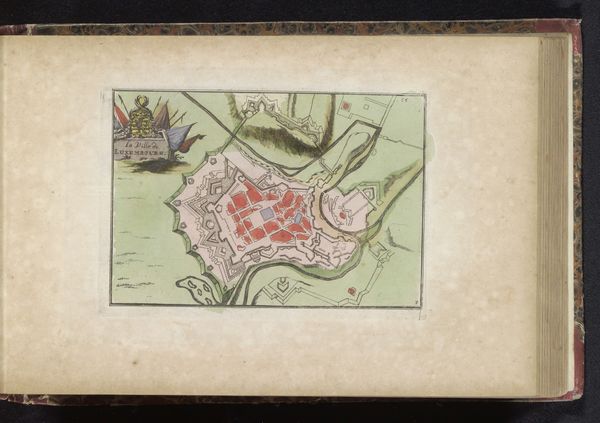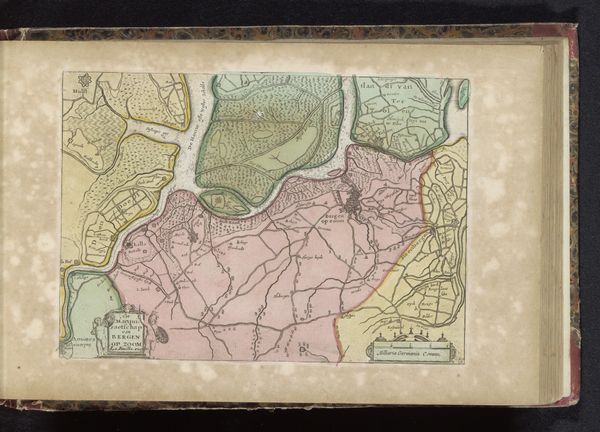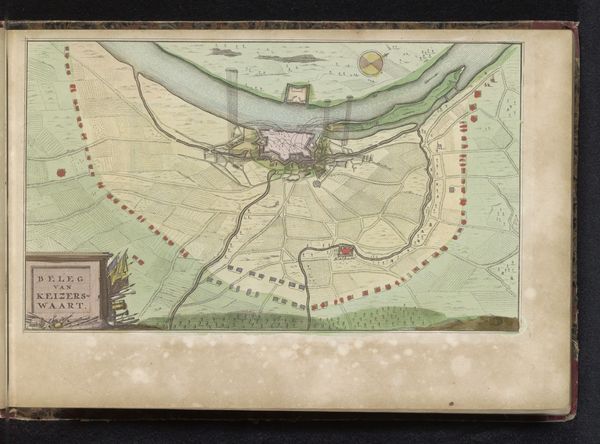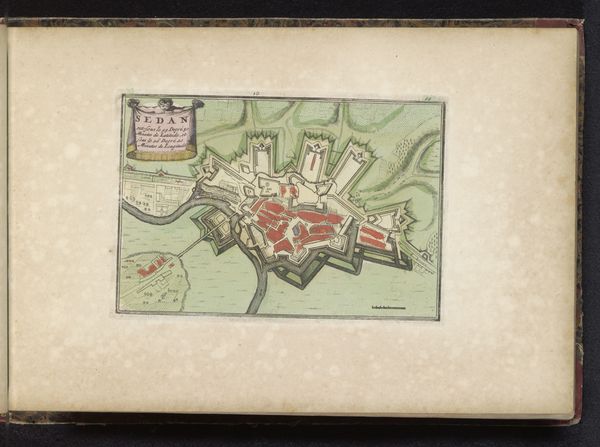
drawing, coloured-pencil, print, paper
#
drawing
#
coloured-pencil
#
baroque
# print
#
landscape
#
paper
#
coloured pencil
#
geometric
#
geometric-abstraction
#
cityscape
Dimensions: height 88 mm, width 64 mm, height 155 mm, width 126 mm
Copyright: Rijks Museum: Open Domain
Curator: This is “Vier plattegronden,” or “Four Floor Plans,” dating from 1735. We believe it’s the work of an anonymous artist and it's created using drawing, colored pencil, and print on paper. Editor: My immediate impression is how deceptively innocent these plans appear, almost like children’s drawings. The soft colors and miniature fortresses have a strange, disarming effect. Curator: Exactly! The Baroque style lends itself to ornamentation, but here it’s functional – these were likely strategic city plans. Each plan reveals a star-shaped fortification, evidence of the period's obsession with military defense and control. Look at how these shapes control the landscape. Editor: The geometries speak volumes about power structures. These "floor plans" reveal urban space as sites of militarization, the artist unwittingly complicit. You see, this type of urban planning often ignored the needs and experiences of everyday people. Curator: But there's also a beauty to the ordered precision. Look at the rivers embracing the forts as protective arms! Editor: Beauty masking control. Who exactly was afforded "protection" within those star-shaped walls, and at whose expense? This isn’t just an aesthetic exercise. It's a visual document reflecting deeply unequal social relations and political strategies of control. These types of illustrations, on one hand, helped to consolidate powers for a few. Curator: True, art rarely exists in a vacuum. What is striking is that even though these were created in the name of protection, looking at these makes me think about vulnerability. Editor: A vulnerability coded into these cityscapes. It’s not immediately apparent, but it’s there in the careful rendering of these defenses, an attempt to contain the uncontainable anxieties about power. Curator: I think what I appreciate most now is the reminder that perspectives matter. These aren’t just maps; they’re stories seen through very particular eyes. Editor: Absolutely. And critically interrogating whose story is told, and whose is omitted, is the most important work we can do.
Comments
No comments
Be the first to comment and join the conversation on the ultimate creative platform.
